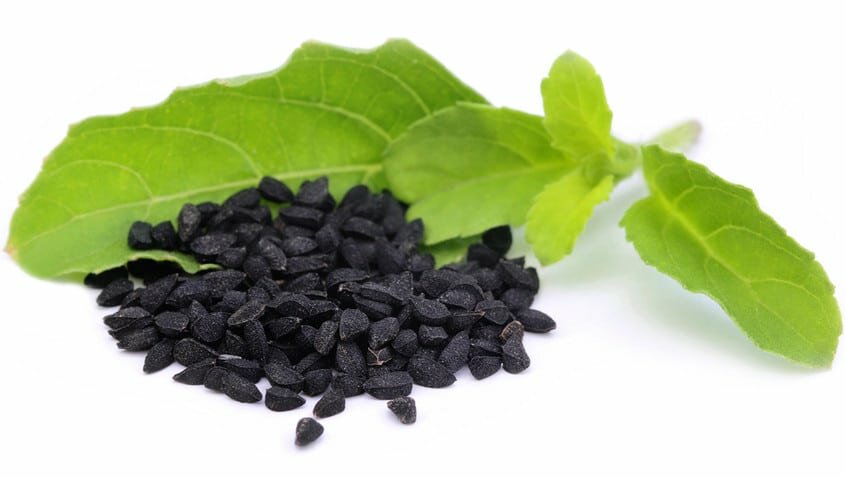POSTED ON
The black seed has been around for ages, yet people are only now starting to learn about it.
What makes this alure more powerful when first hearing about this seed is the fact that black seed oils benefits are critically examined and fully studied all around the world.
It’s surprising to know how few are aware of its properties and benefits, however, we will do our best to enlighten you with what we’ve learned from studying this miraculous herb.
Black seeds (from the nigella sativa plant) have shown tremendous use and effectiveness against a variety of complications and issues, ranging from skin complications to fungal infections.
The power of this seed makes one question how one seed can be so effective against a variety of complications and issues.
The simple fact is that black seeds hold a complex blend of ingredients with two major pillars, thymoquinone (TQ) and Thymohydroquinone (THQ).
This two great compounds effectively talk major inflammatory issues and complications. Not to mention the black seeds other powerful elements, such as its anti-inflammatory, anti-microbial, anti-viral, anti-oxidant, just to name a few!
Did I mention the healthy omega 3,6, and 9? How about its vitamins and other minerals?
When you start to peel back the layers of this black seed, you find a Fibonacci sequence of types which blows the mind away in its superiority to what we think we understand.
I think its safe to say regardless of what you may believe or think, black seed oil is something we all have to research.
You may know black seeds from a variety of different names, depending on which part of the world you’re in or from.
Here are a few other ways black seed oil is referred to around the world:
- Kalonji Oil
- Black Cumin Seed Oil
- Nigella Sativa
- Habbatus Sauda
- Graine De Nigelle
- Black Onion Seeds
- Schwarzkummel

Where does Black Seed Oil Come From?
Black seed oil is simply an extracted oil substance produced by the squeezing and compression of black seeds. There are countless of home appliances that will let you produce your own oil, or you can always buy some here.
The main origin currently of black seed is primarily two places, India, and Turkey. The seeds are grown annually and are shipped all over the world. We searched all over the world to find the best and purest black seed oil. In its purest form black seed oil is very hard to come by, so make sure you do your research!
What Are Black Seeds?
The tiny, black, thick shaped cumin seed is most commonly referred to as ‘black seeds’ or ‘black cumin seeds’. They are slightly curved with a rough distinct texture that makes them unique and easy to identify.
Black seeds can be consumed in a variety of ways! From bread toppings to cold pressing the seeds for the oil.
What is Black Seed Oil Made From?
Black Seed Oil is made from the Nigella sativa plant through a process which compresses the seeds and extracts the oil.
The purest black seed oils will not use a filler oil to increase the quantity of the oil, rather they will leave it as is and keep it pure.
You can tell if your black seed oil contains a filler oil by how easy it is to absorb through internal as well as external uses.
personal chefs and event catering
Miami + Miami Beach + Fort Lauderdale + Palm Beach
